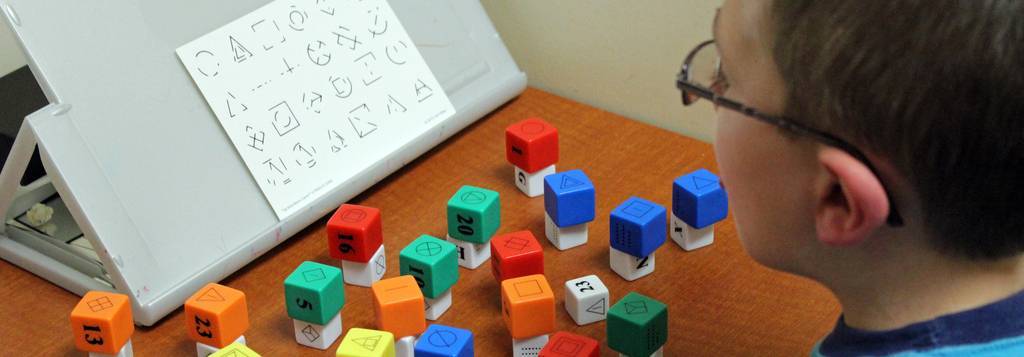 Above: one of our patients playing a game called Multi-Matrix. It trains eye-tracking, eye-hand coordination and visual motor integration.
Above: one of our patients playing a game called Multi-Matrix. It trains eye-tracking, eye-hand coordination and visual motor integration.
Summer is half way over, is your child ready for school in September? One of the fundamental skills for a child's development is called Visual Motor Integration.
Visual Motor Integration describes:
· the ability to interpret visual information
· the ability to direct coordinated movements
· how one synergizes these two processes
In young children, visual motor integration is required in order to use a spoon or fork to feed independently, to throw and catch a ball, or to ride a bike. For older children, proper visual motor integration development is crucial for hand writing legibility, playing musical instruments and sports. It also correlates to reading and math ability. This is because in order to learn to read, the child must first learn how to decipher and organize visual information. For example, to differentiate between letters ‘b’ and ‘d’ and sight words such as ‘horse’ and ‘house.’ With regards to math, the child need to be able to spatially organize calculations, differentiate similar shapes such as diamond and square, and make accurate charts and graphs.


Figures above were produced by one of our 9 year old patient who was diagnosed with a deficit in visual motor integration. The first half of the page is pre-vision therapy, and second half is post-vision therapy.
The development of visual motor integration is a learned process, starting in infancy. Here is a table of visual motor milestones. Children who do not have good visually-guided motor skills will benefit from both vision therapy (visual perceptual assessment) and occupational therapy.
| Age | Description |
| 1 y 1m | Imitates adult by scribbling with crayon |
| 1y 3m | Marks independently on paper with crayon |
| 1y 4m | Scribbles spontaneously and freely with crayon |
| 1y 9m | Scribbles without going off paper |
| 2y | Imitates drawing a vertical line |
| 2y 1m | Uses paints and brush |
| 2y 6m | Imitates drawing a horizontal line |
| 2y 9m | Imitates drawing circular lines |
| 2y 10m | Copies a vertical line |
| 3y | Copies a circle |
| 3y 6m | Imitates drawing an oblique cross |
| 3y 9m | Traces and stays on (most of the time) a 3”, pencil-thick, horizontal line |
| 4y | Draws a person with 3 different body parts |
| 4y 1m | Copies a vertical-horizontal cross |
| 4y 6m | Copies a square |
| 4y 10m | Draws some simple, recognizable objects |
| 4y 11m | Copies an X |
| 5y | Draws a face with mouth, nose, and eyes; copies first name although letters may be awkward, or reversed |
| 5y 3m | Copies a triangle |
| 5y 4m | Draws a person with 6 or more different parts |
| 5y 6m | Copies an open square and circle together |
| 5y 11m | Draws a smooth line within an angled and curved path approximately ¼”wide |
| 6y 1m | Prints all numerals 0-9 and all letters without copying |
References
1. Daly CJ, Kelley GT, Krauss A. Relationship Between Visual-Motor Integration and Handwriting Skills of Children in Kindergarten: A Modified Replication Study. American Journal of Occupational Therapy. 2003; 57:459-462.
2. Kulp MT. Relationship between Visual Motor Integration Skill and Academic Performance in Kindergarten through Third Grade. Optometry and Vision Science. 1999; 76:159-163.

